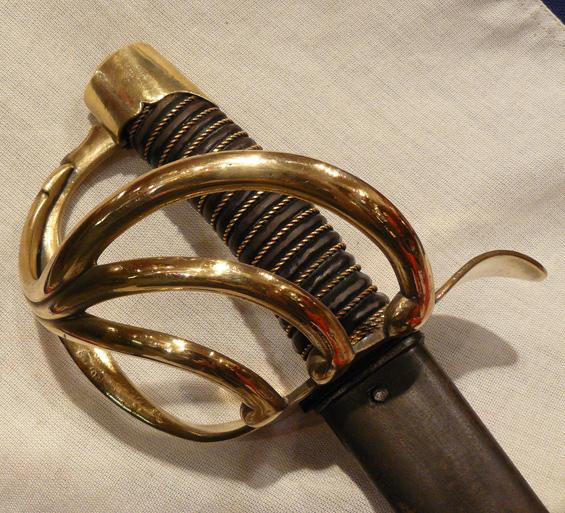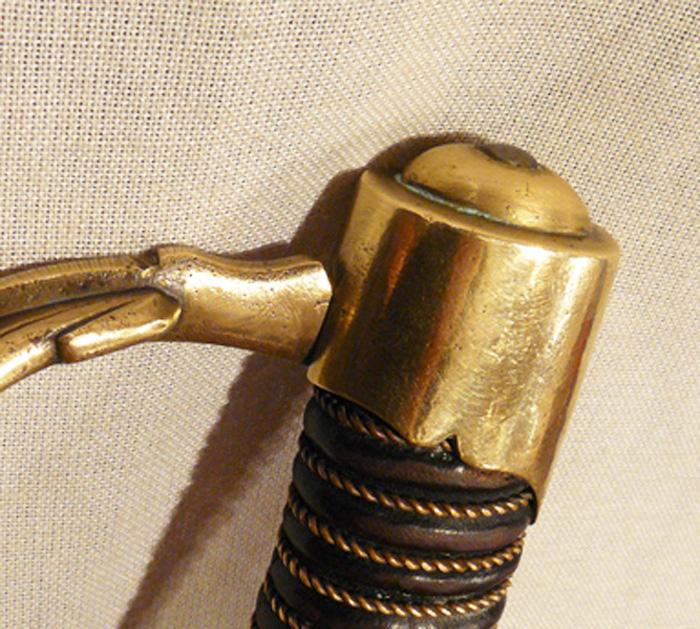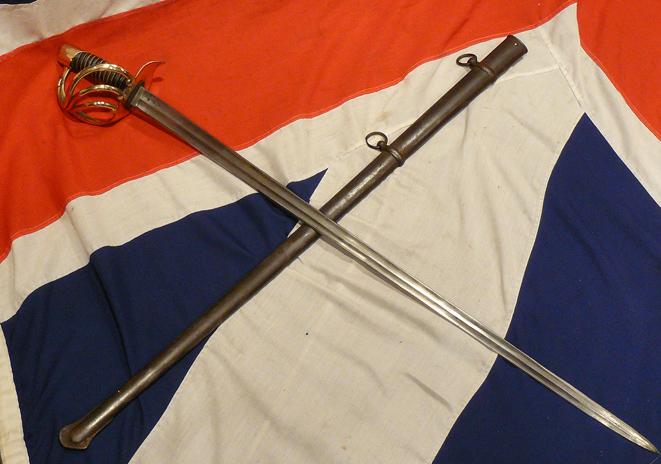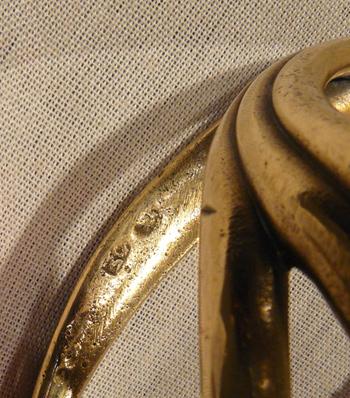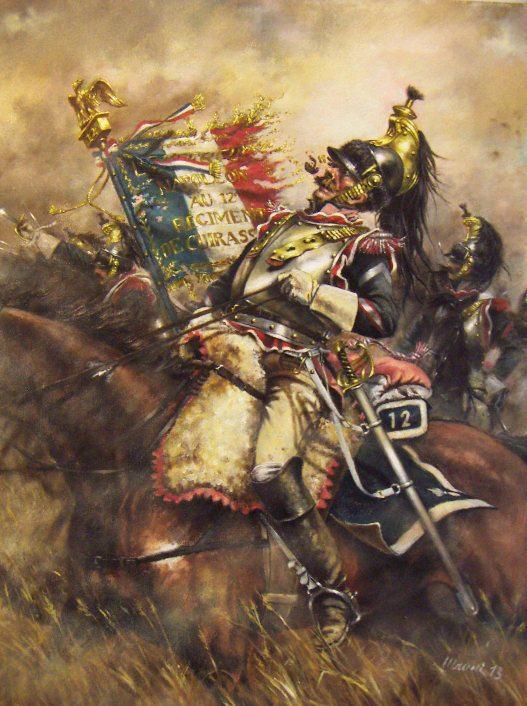A Superb & Most Special Napoleonic French Sword. A Very Rare Ist Napoleonic Pattern Cuirassiers Sword
With the distinctive Year IX hilt and set with a Year XI blade. A true Napoleonic gem in very good condition for it's age. Made around 1802 to 1805, with superb French Inspector stamps. Grip possibly re-bound. Traditional double fullered blade with Inspectors marks. A souvenir of the 'Grande Armee, Elite Cuirassiers' that would have seen service throughout the whole Napoleonic Wars and the greatest Napoleonic Battles, from Austerlitz, Wagram and Moscow to the Peninsular War and Waterloo. All of Napoleon's Heavy Cavalry Regiments fought at Waterloo, there were no reserve regiments. Some of the battles this would have been used at were; 1805: Wertingen, Ulm, Hollabrunn, Raussnitz, and Austerlitz.
1806: Jena and the Capture of Lubeck.
1807: Hoff and Eylau.
1809: Eckmuhl, Ratisbonne, Essling, Wagram, Hollabrunn, and Znaim.
1812: Borodino and Moscow, Ostrowno, and Winkowo 1813: Reichenbach and Dresden, Leipzig and Hanau
1814: La Rothiere, Rosnay, Champaubert, Vauchamps, Athies, La Fere-Champenoise and Paris
1815: Quatre-Bras and Waterloo
The French Invasion of Russia ( Campagne de Russie) began on 24 June 1812 when Napoleon's Grande Armée crossed the Neman River in an attempt to engage and defeat the Russian army. Napoleon hoped to compel Tsar Alexander I of Russia to cease trading with British merchants through proxies in an effort to pressure the United Kingdom to sue for peace. The official political aim of the campaign was to liberate Poland from the threat of Russia. Napoleon named the campaign the Second Polish War to curry favour with the Poles and provide a political pretence for his actions. The Grande Armée was a very large force, numbering nearly half a million men from several different nations. Through a series of long marches Napoleon pushed the army rapidly through Western Russia in an attempt to bring the Russian army to battle, winning a number of minor engagements and a major battle at Smolensk in August. Napoleon hoped the battle would mean an end of the march into Russia, but the Russian army slipped away from the engagement and continued to retreat into Russia, while leaving Smolensk to burn. Plans Napoleon had made to quarter at Smolensk were abandoned, and he pressed his army on after the Russians. The battles continued, but once the winter set in Napoleon's army was facing unsurmountable odds that left it effectively shattered beyond repair. Napoleon fled, it is said, dressed as a woman, and the army left to it's sad and miserable fate. Only around 27,000 were able to return after a mere six months of the Russian campaign. The campaign was a turning point in the Napoleonic Wars. The reputation of Napoleon was severely shaken, and French hegemony in Europe was dramatically weakened. The Grande Armée, made up of French and allied invasion forces, was reduced to a fraction of its initial strength. These events triggered a major shift in European politics. France's ally Prussia, soon followed by Austria, broke their alliance with France and switched camps. This triggered the War of the Sixth Coalition. The Cuirassiers Heavy Cavalry Regiments used the largest men in France, recruited to serve in the greatest and noblest cavalry France has ever had. They fought with distinction at their last great conflict at the Battle of Waterloo in 1815, and most of the Cuirassiers swords in England likely or possibly came from that field of conflict, after the battle, as trophies of war. Every warrior that has ever entered service for his country sought trophies. The Mycenae from a fallen Trojan, the Roman from a fallen Gaul, the GI from a fallen Japanese, the tradition stretches back thousands of years, and will continue as long as man serves his country in battle. In the 1st century AD the Roman Poet Decimus Iunius Iuvenalis Juvenal
wrote; "Man thirsts more for glory than virtue. The armour of an enemy, his broken helmet, the flag ripped from a conquered trireme, are treasures valued beyond all human riches. It is to obtain these tokens of glory that Generals, be they Roman, Greek or barbarian, brave a thousand perils
and endure a thousand exertions". A truly magnificent Napoleonic sword in superb condition for it's age.
The largest sword of it's kind that was ever made or used by the one of world's greatest cavalry regiments. Made at Klingenthal The cuirassiers were the greatest of all France's cavalry, allowing only the strongest men of over 6 feet in height into it's ranks. The French Cuirassiers were at their very peak in 1815, and never again regained the wonder and glory that they truly deserved at that time. To face a regiment of, say, 600 charging steeds bearing down upon you, mounted with armoured giants, brandishing the mightiest of swords that could pierce the strongest breast armour, must have been, quite simply, terrifying.
A most fine special offer piece
Code: 23832
2550.00 GBP


